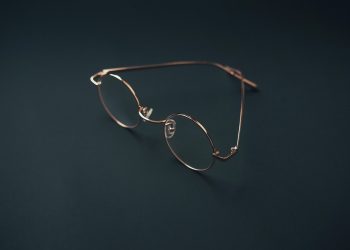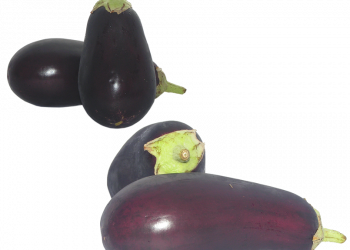Contents
5 Fish Oil Foods to Boost Your Eye Health Naturally
Did you know that your diet can play a significant role in maintaining eye health? It’s true! One of the key nutrients that can support your vision is omega-3 fatty acids, commonly found in fish oil. But instead of reaching for a supplement, why not incorporate some delicious, omega-3-rich foods into your meals? Let’s dive into five fish oil foods that can naturally boost your eye health.
1. Fatty Fish
When it comes to fish oil, fatty fish like salmon, mackerel, sardines, and trout are your best friends. These fish are not only rich in omega-3 fatty acids (DHA and EPA) but also packed with other essential nutrients that promote eye health.
Why They’re Good for Your Eyes:
Omega-3 fatty acids are known to reduce inflammation and support the structural integrity of the retina. Studies suggest that these fatty acids can help reduce the risk of age-related macular degeneration (AMD) and dry eye syndrome.
How to Enjoy:
Grill, bake, or pan-sear these fish for a tasty meal. Toss some fresh herbs on top, and you’ve got yourself a delicious dish that’s great for your eyes!
Caveat:
While fatty fish are generally safe to eat, it’s important to be mindful of mercury levels. Opt for wild-caught varieties when possible, as they typically have lower mercury concentrations compared to farmed fish.
2. Chia Seeds
Not just a trendy health food, chia seeds are a powerhouse of omega-3s, specifically in the form of ALA (alpha-linolenic acid). While ALA isn’t as potent as DHA and EPA found in fish, it can still be beneficial for eye health.
Why They’re Good for Your Eyes:
Chia seeds are rich in antioxidants and can help combat oxidative stress, which is known to contribute to eye diseases. They also provide fiber, which is great for overall health.
How to Enjoy:
Mix chia seeds into smoothies, oatmeal, or yogurt for an easy nutritional boost. You can also make chia pudding by soaking the seeds in almond milk overnight—delicious!
Caveat:
Some people may not digest chia seeds well, so it’s a good idea to start with small amounts and see how your body reacts.
3. Walnuts
These brain-shaped nuts are not just a snack; they’re also a fantastic source of omega-3 fatty acids. In fact, walnuts contain more ALA than any other nut, making them a great addition to your eye-healthy diet.
Why They’re Good for Your Eyes:
Walnuts have been shown to improve retinal function and may reduce the risk of degenerative diseases. They’re also rich in antioxidants, which can help protect your eyes from oxidative damage.
How to Enjoy:
Add walnuts to your salads, oatmeal, or even baked goods for a crunchy texture and nutty flavor. Just remember, moderation is key—these nuts are calorie-dense!
Caveat:
If you have a nut allergy, walnuts may not be suitable for you. Always consult with a healthcare provider if you’re unsure.
4. Flaxseeds
Another plant-based source of omega-3 fatty acids, flaxseeds are versatile and easy to incorporate into your diet. They’re rich in ALA and come with a host of additional health benefits.
Why They’re Good for Your Eyes:
Flaxseeds contain lignans and antioxidants that help reduce inflammation and support eye health. Some studies suggest they may also help alleviate dry eye symptoms.
How to Enjoy:
Ground flaxseeds can be added to smoothies, oatmeal, or baked goods. Just be sure to grind them, as whole flaxseeds may pass through your digestive system undigested.
Caveat:
Flaxseeds can also cause digestive discomfort for some people, so start with small amounts and see how your body responds.
5. Seaweed
If you’re looking for a unique way to get your omega-3s, seaweed might just be the answer. It’s a staple in many Asian cuisines and is packed with nutrients.
Why It’s Good for Your Eyes:
Seaweed is rich in antioxidants, vitamins, and minerals that support overall eye health. Certain types of seaweed, like nori and wakame, also contain omega-3 fatty acids, although in smaller amounts compared to fatty fish.
How to Enjoy:
Use seaweed in salads, soups, or sushi rolls. You can also find snacks made from roasted seaweed that are both tasty and nutritious.
Caveat:
Be cautious about the source of seaweed, as it can absorb heavy metals from the ocean. Look for brands that test for contaminants.
Frequently Asked Questions
1. How much omega-3 do I need for eye health?
The American Heart Association recommends at least two servings of fatty fish per week, which can provide a good amount of omega-3 fatty acids.
2. Can I get enough omega-3s from a plant-based diet?
Yes, you can obtain omega-3s from plant sources like chia seeds, flaxseeds, and walnuts, but it’s important to note that these provide ALA, which the body must convert to DHA and EPA.
3. Are fish oil supplements necessary?
While supplements can be beneficial for some, it’s often best to obtain nutrients through whole foods. Always consult a healthcare provider before starting any new supplement.
4. What are the signs of omega-3 deficiency?
Common signs can include dry eyes, vision problems, and inflammation. If you suspect a deficiency, it’s best to consult a healthcare professional.
Conclusion
Incorporating these fish oil foods into your diet can be a delicious and effective way to support your eye health. Whether you prefer the rich flavors of fatty fish or the unique taste of seaweed, there’s something for everyone. Remember to balance your diet with a variety of nutrients and consult a healthcare provider for personalized advice.
And let’s be real—eating healthy doesn’t have to be a chore. With these tasty options, you can enjoy your meals while giving your eyes the care they deserve. So, why not whip up a dish featuring one of these omega-3-rich foods today? Your eyes will thank you!
Disclaimer: This article is for educational purposes only and is not a substitute for professional medical advice. Always consult a qualified healthcare provider before making changes to your health routine.
References
-
Seddon, J. M., et al. (1996). “A prospective study of dietary fat and the risk of age-related macular degeneration.” American Journal of Clinical Nutrition, 63(5), 707-713. https://doi.org/10.1093/ajcn/63.5.707
-
National Eye Institute. (2021). “The Role of Omega-3 Fatty Acids in Eye Health.” https://www.nei.nih.gov/learn-about-eye-health/healthy-vision/omega-3-fatty-acids-eye-health
-
Harvard Health Publishing. (2020). “The Health Benefits of Omega-3 Fatty Acids.” https://www.health.harvard.edu/staying-healthy/the-health-benefits-of-omega-3-fatty-acids
Get Your FREE Natural Health Guide!
Subscribe now and receive our exclusive ebook packed with natural health tips, practical wellness advice, and easy lifestyle changes — delivered straight to your inbox.













